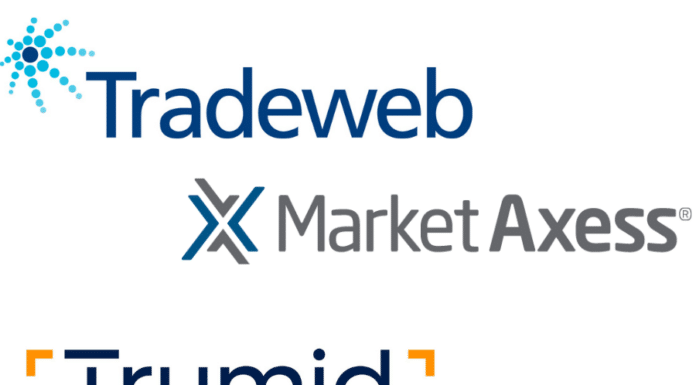AXA Investment Managers’ global head of trading & securities financing displays a steady hand as his trading function begins servicing new investment models while navigating turbulent markets.
There is considerable disruption to fixed income market structure currently; how are your trading operations handling that?
We feel clear about the direction we want to go in, and we are seeing some of the uncertainty that existed disappear. For example, the market initially thought pre-trade transparency requirements under MiFID II made the request-for-quote (RFQ) process unsustainable. We still have concerns about the consequence of the regulatory technical standards (RTS) in forcing banks to multi-laterally display prices, but we believe RFQ will still be a very important execution strategy post-MiFID II.
How is the trading desk able to take control and move in the direction you want?
Data is the key. We have developed a suite of proprietary applications, that we simply call ‘the pricers’. They provide rich market data. Our tools capture streaming prices from banks which effectively gives us a real-time view of market levels. From that platform all sorts of possibilities arise. We can make prices to fund managers, we can reference counterparts’ axes against market levels and of course we can run very meaningful benchmarking of our executions against this data.
What was the driver for developing that?
Originally because bond pricing information was hard to access and was unreliable by the time you wanted to execute. Now we are looking to re-configure that access. The cost of data is extremely high, frankly, and we needed to find a more commercial solution. The pricer database is really the hub of our trading intelligence; it captures historical data such as where we have previously executed or requested quotes from banks and with the streaming prices, it creates a virtual order book of thousands of bonds. It provides us with a very similar range of functionality and insights, as we have in equities, for example. We can potentially then enhance this with executable pricing information as opposed to indicative valuation prices, the divergence of which we are also enabled to analyse.
Why did you choose to develop a proprietary system?
It’s been kept outside of our order management system (OMS) deliberately as we don’t want the performance of the OMS compromised by a lot of data flying through it. That said, driven by cost management, we are looking at third parties to industrialise the core of that process.
As an organisation we are moving to Simcorp Dimension as a platform to harmonise our front office architecture. For the trading desk it allows us to have our core workflow running through an integrated platform. Where there are specific functionality requirements only relevant to trading then we can then develop them outside of the OMS, which allows us to be creative about our technical development without being tied to a multi-dependent technology team.
The aim is to maintain a working environment of ‘business as usual’ for our traders while positioning them to meet all of the regulatory demands of the future, and that applies to our use of technology as well.
Have initiatives like Neptune, which is creating FIX messaging standards for fixed income trading, helped?
Project Apollo is more relevant to us than Neptune as we have a proprietary ‘axes tool’ which is very efficient and Neptune is about simplifying the transmission of axes, whereas Apollo is about receiving streamed data from banks in a standardised protocol which should drive data costs lower. It is great to see that work being done on a ‘not for profit’ basis but it is just one of a number of initiatives to provide aggregated market data in a more efficient manner and in that respect we are engaged with several vendors.
In the shorter-term how is market volatility affecting the team?
We have a very experienced team. In a perverse way we quite enjoyed aspects of the Brexit fallout. Markets have become so sophisticated and well regulated that you don’t get the same shocks that we saw 10 or 20 years ago. Our traders were drawing on their experience and their ability to be calm in the eye of the storm. That was most notable on the 24th June and on the following Monday. There was a huge amount of volume, a very diverse range of activity and a considerably heightened requirement from fund managers and clients to know what was going on in the market.
How do you see the model between fund managers and traders changing?
The traditional buy-side model is that the traders are very much governed by the fund managers. That dynamic is an interesting area of focus for me. Is that the optimal model for our clients? From an execution point of view I am trying to shift our focus to be more directly linked to our clients. They are increasingly interested, for example, to hear about our views on trends in liquidity or electronic trading of fixed income.
We have the capacity to go to clients more directly, partly because trading in all its forms now is far more complex, and I don’t think it’s authentic to expect a fund manager to discuss very technical elements of the market and trading with a client.
Has the input you provide to fund managers changed?
We tend to be more regulatory focussed than portfolio managers due to the market-facing role we play and this manifests itself in how we present trading or market information to them.
To facilitate that exchange of information we have a regular series of meetings with the fund managers, with a suite of key performance indicators (KPIs) such as how much trading is electronic, how many orders have been put in competition between banks, what is our execution performance against the benchmark and how quickly are we acknowledging orders. A lot of interesting information is exchanged there. The real benefit is to provide a regular forum for discussion between traders and fund managers for example regarding likely liquidity needs ahead of a fund launch or asset allocation change.
Where do you see the most need for new capabilities in the trading function?
I am encouraging my team in some areas to become adaptable, to take on more of a hybrid role than we used to have. We need to use quantitative trading methodologies more, to differentiate the types of execution solutions that our clients need.
Is its structure changing?
Our wider team covers not just trading but also securities financing, where we are looking to be more collaborative with the structuring and solutions team. We think their expertise is very complimentary in offering bundled investment solutions, particularly geared towards insurance companies and third party clients.
We are looking to do something quite different by raising the profile of our securities financing operations as a combined offering alongside derivatives management, to provide liquidity solutions to our clients based around collateral optimisation.
The structuring and solutions managers need our expertise around execution, derivatives execution and our repo capability. They continuously talk to clients and understand their needs, so we can respond to those managers to provide customised solutions to our clients.
How will the firm’s growth impact trading?
We are dealing with two significant new initiatives that will increase activity and the diversity of instruments that we cover. The first is a fund overlay strategy. It will generate a significant amount of volume and uses a number of instrument types that we don’t have great history of trading, for example cross asset swaps and swaptions. That is very live.
We are also working closely with our new team in Hong Kong who will be managing liquid absolute return strategies.
To what extent is regulation affecting the team’s capacity to change?
Regulatory drivers are encouraging us to move to more electronic trading. Take trade reporting requirements. They require a very granular audit trail whereby the trader is tagging an execution instruction to each trade, they demand that the execution price is analysed, that the choice of counterparts has some rationale behind it. All of these things are more easily captured if you trade electronically.
No regulator of the future will afford you the time to show them your lever-arch file from six months ago to have a look at the paper tickets where you have recorded the quotes you received. They want a report that has every timestamp and is systematically populated to evidence you have met your best execution and other regulatory requirements.
In 12 months’ time how will your sell-side relationships have changed?
I hope that they will be somewhat simplified in terms of understanding each other’s requirements and challenges. The buy side will be forced to increasingly rationalise, discriminate and evidence its execution actions and that will lend itself to a much more detailed discussion about servicing on specific instruments and execution strategies. Some of the connectivity solutions aren’t going to be best provided by banks in the future.
Electronic liquidity providers (ELPs) – like Virtu and Optiver – have a role to play, and banks know they can’t simply rely on clients coming to them to ask for a price anymore. If there is clever technology that accesses ELPs, that becomes an execution channel.
So I think banks will have to continue to do what they have been doing more recently and structure themselves so as to become genuine specialists in a more limited number of areas, and not to try and be good at everything.
The roles of different market participants can evolve healthily for all – it just needs to happen as a series of partnerships.
Biography:
Paul Squires is the global head of trading and securities financing at AXA Investment Managers (AXA IM). He began his career as an equity trader for Mercury Asset Management – now BlackRock – in 1993, before becoming a UK equity trader for Sun Life Investment Management in 1996, which subsequently became part of AXA IM. He is a business economics graduate of Reading University
He has led the team of 31 traders in London, Paris and Greenwich (US) covering equities, fixed income, FX and money markets – including derivatives – since July 2015. He joined AXA IM in 1996 as a trader and became head of trading in 2005.
©TheDESK 2016
©Markets Media Europe 2025








